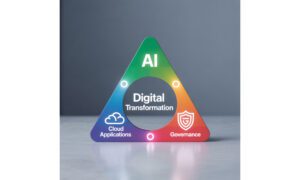Startups in 2025 face challenges that go beyond just building an MVP. Relying on a single developer to handle everything – coding, design, testing, and scalability – is no longer effective. Here’s why:
- User Expectations Are Higher: People expect polished, user-friendly, and reliable products from the start.
- Complex Development Needs: Tasks like security, responsive design, and infrastructure management require specialized skills.
- Growth Bottlenecks: A solo developer can slow down scaling, maintenance, and onboarding new talent.
- Missed Opportunities: Without diverse expertise, startups risk technical debt, poor user experience, and misaligned business priorities.
To succeed, startups need a multidisciplinary team, including a product owner, UI/UX designer, developers, and QA engineers. Alternatively, partnering with a software agency provides an all-in-one solution for building scalable and reliable products.
Key Takeaway: Building great software in 2025 requires the right mix of skills, not just a single developer. Startups that invest in a complete team save time, reduce risk, and ensure long-term growth.
Build Effective Teams | People Development for Startups
The Problems with Using Only One Developer
At first glance, hiring a single developer might seem like a cost-effective choice for your startup. But this approach often creates major hurdles that can derail progress. Modern software development requires a blend of skills that no single person can fully master.
Gaps Beyond Writing Code
While developers are great at coding, they often lack expertise in areas like UI/UX design, project management, and quality assurance. This can lead to user interfaces that prioritize technical logic over usability, leaving users frustrated with confusing navigation, poor visual hierarchy, and accessibility oversights.
Project management is another area where solo developers can struggle. Their focus tends to be on immediate technical challenges rather than long-term goals. For example, they might spend weeks perfecting a feature that adds minimal business value while ignoring critical user-facing improvements. Without someone to oversee the bigger picture, timelines can spiral out of control, and scope creep becomes a recurring issue.
Then there’s quality assurance. Developers may test their own code for basic functionality, but they often lack the structured approach needed for thorough testing. Since they already know how the system is supposed to work, they can overlook edge cases or the unexpected ways users might interact with the product.
Code Quality and Business Misalignment
When working solo, developers often make decisions based on what’s quickest to implement rather than what’s best for the business in the long run. This leads to technical debt – short-term fixes that become costly to address as the product scales.
Without input from business-focused team members, developers might prioritize solving technical challenges over addressing user needs. They may also choose technologies they want to experiment with instead of proven tools that align with your startup’s budget and timeline.
Another common issue is the lack of documentation. When only one person understands the system, it creates a bottleneck. If that developer leaves, making changes or fixing issues becomes a slow and frustrating process.
Security is another area that can suffer. Developers focused on building features might overlook vulnerabilities, leaving your product exposed. Without a dedicated security review, these risks can go unnoticed until they cause serious problems.
Challenges with Growth and Maintenance
A solo developer quickly becomes a bottleneck, slowing down bug fixes, feature rollouts, and critical decisions. This can stifle growth and compromise the scalability of your product.
Tasks like DevOps and infrastructure management often require specialized knowledge that most application developers don’t have. If your user base suddenly grows, you’ll need someone who understands server scaling, database optimization, and deployment automation. A single developer trying to juggle these tasks alongside feature development can lead to downtime and user frustration.
As your startup expands, the lack of knowledge sharing becomes a bigger issue. When everything resides in one person’s head, onboarding new developers takes much longer. The original developer must pause productive work to explain systems and decisions that should have been documented from the start.
Maintenance and updates also take a hit. With one person constantly putting out fires, technical debt piles up, security patches get delayed, and the codebase becomes harder to manage. What initially seemed like an agile advantage for your startup quickly turns into a liability, slowing down future development efforts.
These obstacles underscore why relying on a single developer isn’t enough to meet the demands of a growing startup. A well-rounded development team can address these challenges more effectively, which we’ll explore next.
Team Roles Startups Need for Complete Development
Building successful software requires more than just coding – it takes a well-rounded team with specific expertise. To bridge the gaps between vision, design, and reliability, startups need key roles that transform ideas into market-ready products. Here’s a closer look at the roles that can elevate your product from functional to exceptional.
Product Owner: Turning Vision into Actionable Goals
The product owner is the crucial link between your startup’s vision and the development team’s day-to-day work. They take big-picture business goals and translate them into actionable tasks for the team.
Product owners prioritize features, align development efforts with user needs and business objectives, and maintain the product roadmap. They’re also the gatekeepers for new feature requests, ensuring the team stays focused on delivering what matters most. By saying no to ideas that don’t align with the current goals, they prevent scope creep and keep resources laser-focused.
This role is especially vital for startups with limited resources. Instead of leaving developers to guess what’s most important, the product owner provides clear direction based on market research, user feedback, and business priorities. They also handle stakeholder communication, sparing developers from endless meetings and allowing them to concentrate on coding.
Once priorities are set, the design team takes over to craft an intuitive user experience.
UI/UX Designer: Making Products User-Friendly
UI/UX designers ensure your product isn’t just functional but also intuitive and enjoyable to use. While developers focus on making features work, designers focus on making them work seamlessly for the end user.
UX designers dig deep into how users interact with your product. Through research, they create user personas, map out user journeys, and identify pain points that might go unnoticed by the development team. These insights shape design decisions that can significantly boost user adoption and retention.
UI designers take these insights and translate them into visually appealing and accessible interfaces. They consider factors like layout, color schemes, and accessibility, ensuring the design not only looks good but also works for everyone.
The collaboration between designers and developers is particularly impactful during wireframing and prototyping. Designers can test ideas with users early on, catching usability issues before development begins. This saves time and resources by addressing potential problems before they become costly to fix.
Once the design ensures usability, the next step is to validate the product’s performance and reliability.
Quality Assurance Engineer: Ensuring a Reliable Product
Quality assurance (QA) engineers bring a fresh perspective to the table, testing your product as users would and catching issues that developers might overlook. Their systematic approach ensures your product performs reliably under real-world conditions.
QA engineers create detailed test plans that cover everything from typical user scenarios to edge cases and error conditions. They also set up automated testing frameworks that continuously check for issues as new code is added. This proactive approach identifies critical bugs before they reach production.
But QA isn’t just about finding bugs. QA engineers often flag usability issues, like confusing workflows or unclear error messages, and help ensure the product performs smoothly. They also oversee testing across various devices, browsers, and operating systems, guaranteeing a consistent experience for all users.
As your product grows and your user base diversifies, this level of rigorous testing becomes indispensable.
When these roles work together, the result is a streamlined development process where everyone focuses on their strengths. Product owners guide the team toward building the right features, designers ensure those features are user-friendly, developers make them functional, and QA engineers ensure they’re reliable. This collaborative approach is key to overcoming the challenges startups face when team members are stretched too thin.
Benefits of Working with a Complete Software Agency
Instead of piecing together a team of individual specialists or relying on a lone developer, teaming up with a complete software agency gives startups access to an all-in-one solution. This approach not only fills the gaps we’ve discussed but also offers additional advantages to accelerate your startup’s growth. By providing integrated services, agencies reduce miscommunication and simplify the entire project lifecycle.
Comprehensive Development Services
A full-service software agency takes care of every phase of your project, from initial concept to final deployment. This eliminates the risks that come with fragmented development. It starts with detailed planning and wireframing to solidify your product strategy. Product owners collaborate with you to define requirements, create user stories, and develop a roadmap that aligns perfectly with your business goals.
During the design phase, UI/UX experts focus on crafting interfaces that are not just visually appealing but also functional and user-friendly. These designs aim to turn casual visitors into loyal customers while ensuring users remain engaged with your product.
When it comes to development, the agency brings in skilled developers specialized in various technologies – whether you need a web app, mobile solutions for iOS and Android, or a complex enterprise platform. Their work is supported by rigorous quality assurance processes to catch issues before launch.
Finally, agencies handle deployment with precision, ensuring a smooth rollout and a strong infrastructure. This end-to-end approach means you don’t have to juggle multiple vendors or manage everything internally. Every role within the agency works together seamlessly to deliver a product that’s ready to scale.
Agile Methods for Speed and Adaptability
Agile methodologies divide the project into short, focused sprints. This approach allows for regular delivery of working software, giving you the chance to monitor progress and make adjustments based on real-time user feedback or shifts in the market.
With Agile, you’ll have regular check-ins and demonstrations, ensuring transparency throughout the development process. This way, the final product aligns with your vision. Incremental updates make it easier to adapt quickly, especially in dynamic markets.
For startups, this flexibility is invaluable. You can quickly launch a minimum viable product (MVP), gather insights from actual users, and refine the product based on real-world usage rather than assumptions. Agencies experienced in Agile can guide you through prioritizing features and balancing speed with quality, helping you stay ahead in competitive markets.
Ongoing Support and Growth Planning
Success doesn’t stop at launch. Sustaining growth and maintaining performance require continuous technical support, and agencies are equipped to provide just that. From bug fixes and security patches to performance tuning and feature updates, they ensure your product stays secure, efficient, and aligned with user needs.
Scalability is another key area where agencies shine. They help prepare your software to handle increased traffic and additional functionality as your business grows. By anticipating challenges before they arise, agencies can recommend infrastructure upgrades to keep your product running smoothly.
Many agencies also offer 24/7 emergency response for critical issues, ensuring rapid resolution when something goes wrong. Proactive monitoring and maintenance catch potential problems early, minimizing disruptions for your users.
As your startup evolves, the agency can assist in expanding your reach. Whether it’s developing mobile apps to complement your web platform, integrating third-party services, or adding features based on user feedback, you’ll have a team that already understands your product and goals.
This long-term partnership eliminates the need to constantly search for new developers or onboard fresh talent unfamiliar with your codebase. The agency becomes an extension of your team, deeply invested in your success and equipped with the knowledge to make future development faster and more efficient.
Conclusion: Building a Strong Foundation for Startup Success
In 2025, thriving in the startup world requires more than just technical know-how. Relying solely on a solo developer approach can leave critical gaps that hinder even the most promising ideas. Missing expertise in areas like user experience (UX), quality assurance (QA), and product strategy can disrupt user engagement and limit growth potential.
The solution lies in assembling a multidisciplinary team. This kind of team brings together diverse skills to ensure your product combines vision, usability, and reliability. Each role plays a part in complementing the technical foundation, creating a product that’s both functional and user-friendly.
For many startups, partnering with a full-service development firm is the most efficient way to achieve this balance. Collaborating with a company like Essential Designs provides access to end-to-end development services, simplifying the process of building a strong team. This integrated approach minimizes miscommunication and ensures that every aspect of your product is handled by professionals who are aligned with your goals.
In addition to team structure, adopting Agile methodology is key to staying competitive in fast-moving markets. Agile practices, such as regular sprints and feedback cycles, allow you to quickly release a minimum viable product (MVP), gather real-world insights, and refine based on actual user data. And it doesn’t stop there – ongoing support, from security updates to scaling infrastructure, ensures your product evolves alongside your business. A dedicated team familiar with your codebase and objectives can make future development smoother and more efficient.
Ultimately, the strength of your foundation determines your startup’s trajectory. Whether you choose to build an internal multidisciplinary team or partner with experts, taking a comprehensive approach in 2025 is essential to delivering the kind of user experience and reliability that fuels long-term success in today’s competitive landscape.
FAQs
Why do startups in 2025 need a team with diverse skills instead of just one developer?
In 2025, startups are navigating a landscape filled with challenges that demand more than just technical expertise. Building a multidisciplinary team – one that combines skills in design, strategy, and project management – offers a way to tackle these complexities head-on. By bringing together diverse perspectives, startups can craft solutions that are not only creative but also practical, addressing both user expectations and business goals.
Relying solely on a single developer can narrow viewpoints, slow progress, and make it tougher to handle the intricate demands of today’s tech projects. In contrast, a team with varied expertise boosts flexibility, problem-solving capabilities, and overall efficiency. This kind of collaboration equips startups to thrive in a fast-moving, competitive market.
What key roles does a startup need to build and sustain a successful product?
To create and sustain a successful product, startups need a balanced team with diverse expertise. A product manager plays a key role in shaping the product’s vision and strategy, while engineers and designers work together to transform that vision into a functional and intuitive product. Project managers keep everything running smoothly by ensuring timelines and tasks stay on track.
Other crucial roles include marketing specialists, who focus on positioning the product effectively in the market, and test engineers, who ensure the product meets quality and reliability standards. Bringing together this mix of skills is essential for developing products that align with market demands and achieve lasting success.
What are the advantages of working with a full-service software agency for startups?
Partnering with a full-service software agency offers startups much more than just coding expertise. These agencies come equipped with deep technical knowledge, proven workflows, and access to the latest tools and technologies. This combination allows startups to develop products faster and with greater precision, helping them hit the market sooner.
What’s more, software agencies provide flexible solutions that can grow alongside a startup, removing the need to invest in a costly in-house tech team. By outsourcing the technical heavy lifting, founders can dedicate their energy to innovation, strategic planning, and scaling their business. This kind of partnership not only saves time and money but also positions startups to thrive in a competitive and fast-moving landscape.



































